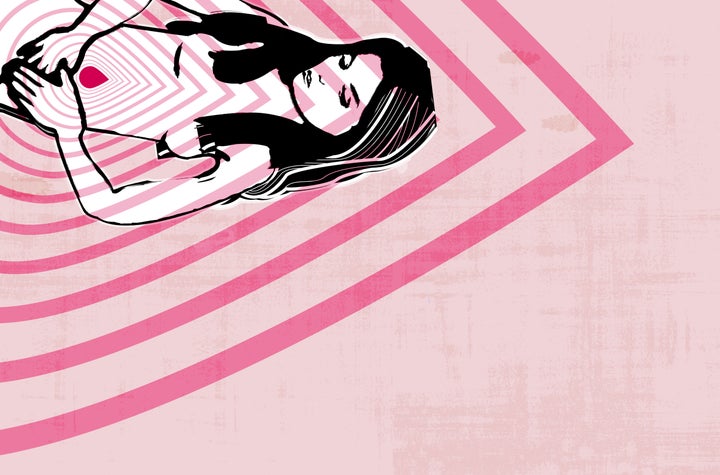Burning, soreness, throbbing: these are all symptoms of vulvodynia, a “disabling” condition which causes chronic pain in the vulva, which can make everyday movement, sex and even inserting tampons agonising.
There are no specific statistics on how many women struggle with vulvodynia however one study suggested it affects around 4-16% of the population – and often, many women will suffer in silence.
One 24-year-old who was diagnosed with the condition described the pain, which could last for minutes or hours at a time, as similar to “getting pins and needles around your vagina”. It made sex impossible.

What Is It?
“Vulvodynia is persistent, unexplained pain in the vulva, which can affect women of all ages,” Aly Dilks, clinical director at The Women’s Health Clinic tells HuffPost UK.
The vulva is the term for the female external genitals including the pubic mound, the vaginal opening, the clitoris, the labia minora (inner lips), the labia majora (outer lips), the urethra and the skin between these parts.
With vulvodynia there is nothing abnormal to see around the vulva and no known cause for the pain. However in some cases the condition can be so painful during intercourse that women shy away from sexual contact completely. This, in turn, can cause significant distress and anxiety.
Symptoms
Some examples of the pain felt by people with vulvodynia include:
:: a burning, stinging or sore sensation
:: pain triggered by touch, such as during sex or when inserting a tampon
:: pain which is constantly in the background and can be worse when sitting
:: pain which is limited to part of the vulva, such as the opening of the vagina
:: more widespread pain which can sometimes spread to the buttocks and inner thighs.
Diagnosis
The diagnosis process for vulvodynia can often take time, as GPs have to rule out other conditions which can cause vulval pain like thrush, herpes or eczema.
A map of vulval clinics and services in the UK has been created by The British Society for the Study of Vulval Disease – you can use it to search for services near you.
Treatment
For vulvodynia patients, different remedies can help in different cases. Some people might need to make lifestyle changes, while others might find anaesthetic creams, medications or therapies more helpful.
Ultimately, the condition is unlikely to get better on its own which is why seeking treatment is so important.
Lifestyle changes
Dilks recommends wearing 100% cotton underwear and loose-fitting skirts or trousers if you suffer with vulval pain. She also advises avoiding scented hygiene products such as feminine wipes, bubble bath and soap as they may aggravate symptoms. Instead, try using an emollient. Applying cool gel packs to the vulva may also soothe the pain, she suggests.
It might seem natural to avoid sex if you’re experiencing vulvodynia, but Dilks advises against it. “Try not to avoid sex or touching your vulva completely, as this may make your vulva more sensitive,” she says. “If sex is painful, try to find a position that’s more comfortable, or if penetration is painful, do other sexually intimate activities together until you’ve sought advice.”
Creams
Some women use local anaesthetic creams (such as the gel lidocaine) to help numb the area. Dilks recommends applying it to the vulva 10 minutes before sex to help make it more comfortable. She added that if the pain is constant, it’s worth applying the cream regularly throughout the day.
“A tip is to put some on a cotton makeup removal pad and put it onto the sore area so it’s held in place by your underwear,” she added, before pointing out it’s best to seek a doctor’s advice before trying it.
If the vulva is dry, vaginal lubricants and aqueous cream may help to soothe the area and moisturise it, she adds. But, again, it’s worth speaking to your pharmacist about these treatments before trying them.
Medication
Conventional painkillers such as paracetamol won’t usually relieve the pain of vulvodynia, but several medications available on prescription can help. Sometimes antidepressants amitriptyline and nortriptyline and prescribed, as are anti-epilepsy medicines called gabapentin and pregabalin. But both types of medication have possible side effects.
Dilks explains: “Your doctor will probably start you on a low dose and gradually increase it until your pain subsides. You may need to take the medication for several months.”
TENS machine
A TENS machine (transcutaneous electronic nerve stimulation) may also be used to reduce the pain, by delivering a mild electrical current to the affected area. According to the NHS, the electrical impulses can reduce the pain signals going to the spinal cord and brain, which may help relieve pain and relax muscles.
“They may also stimulate the production of endorphins, which are the body’s natural painkillers,” the NHS adds.
Therapy
If medication isn’t an option, therapy certainly should be. Cognitive behavioural therapy (CBT) helps patients manage the reality of the pain by changing how they think and act. Dilks explains: “It can often help women cope with the impact that vulvodynia has on their life.”
Meanwhile psychosexual counselling is helpful when pain is affecting intimacy. “This is a type of therapy that aims to address problems such as fear and anxiety about sex, and to restore a physical relationship with your partner,” she adds.
Self-help groups, forums and charities may also prove valuable resources for women affected.